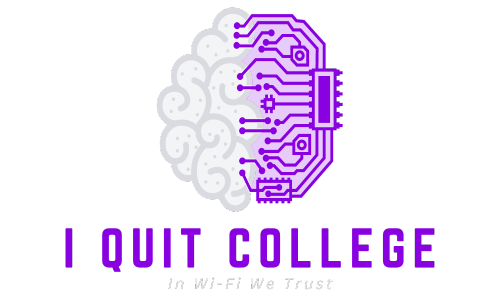Content creation plays a vital role in digital marketing, offering companies an opportunity to engage with their target audience, build brand awareness, and drive conversions. In today’s competitive landscape, it’s crucial for businesses to develop effective content creation strategies to stay ahead.
Whether you’re new to content creation or looking for ways to level up your existing strategy, this article will provide you with valuable insights and tips to drive results. From best practices to content creation services, we’ll cover it all.
Key Takeaways:
- Content creation is a crucial component of digital marketing, enabling businesses to connect with their target audience.
- An effective content strategy involves setting goals, creating a content calendar, incorporating various content types, and utilizing appropriate marketing tools.
- Repurposing content helps maximize its value and extend its lifespan.
- Without a well-defined content strategy, companies risk publishing random content that doesn’t reach their target audience.
- A content creation strategy enhances consistency, drives brand awareness, increases engagement, and enables data-driven decision-making.
Why You Need a Content Creation Strategy
Without a well-defined content strategy, companies risk publishing random pieces of content without reaching their target audience or posting at the wrong time. A content strategy offers numerous benefits, including:
- Establishing a clear roadmap
- Enhancing consistency
- Targeting the right audience
- Maximizing resources
- Driving brand awareness
- Increasing engagement and conversions
- Enabling data-driven decision-making
- Staying ahead of the competition
A content creation strategy involves performing thorough research on the target audience, gathering insights through online surveys, social media polls, blog comments, and social listening, and using analytics tools for demographics and metrics. Keyword research is crucial for optimizing content for search engines. Clear goals should be defined using the SMART methodology.
“A well-defined content strategy helps businesses align their content creation efforts with their goals, ensuring they produce the right content for the right audience at the right time. Without a content strategy, businesses are simply shooting in the dark.”
Content Strategy Benefits
| Benefits | Description |
|---|---|
| Establishing a clear roadmap | A content strategy helps businesses plan their content creation and distribution, providing a roadmap to follow and aligning efforts with long-term goals. |
| Enhancing consistency | Consistency is key in content marketing. A strategy ensures that content is consistently produced, maintaining brand voice and messaging across all channels. |
| Targeting the right audience | A content strategy involves understanding the target audience’s needs, interests, and pain points, enabling businesses to create content that resonates and engages. |
| Maximizing resources | With a strategy in place, businesses can optimize their resources, ensuring they invest in creating content that delivers the highest impact and return on investment. |
| Driving brand awareness | By consistently creating and distributing valuable content, businesses can increase their brand awareness and visibility among their target audience. |
| Increasing engagement and conversions | A well-executed content strategy can lead to higher engagement levels and increased conversions, turning prospects into loyal customers. |
| Enabling data-driven decision-making | Through analytics and data-driven insights, a content strategy provides businesses with valuable information to make informed decisions and optimize their content performance. |
| Staying ahead of the competition | With a content strategy, businesses can differentiate themselves from their competitors by delivering unique and valuable content that sets them apart. |
Overall, a content strategy framework is essential for businesses to effectively navigate the ever-evolving landscape of content creation, ensuring that their efforts align with their goals and successfully engage their target audience.
Developing a Content Creation Strategy
Before diving into content creation, it’s crucial to establish a solid content creation strategy. This involves various steps and components that lay the foundation for an effective and efficient content marketing approach.
Brainstorming Content Ideas
To kickstart the content creation process, brainstorming sessions are essential. This allows you to generate a wide range of ideas that align with your brand, target audience, and industry trends. By fostering creativity and collaboration, brainstorming sessions pave the way for unique and engaging content concepts.
Performing a Content Audit
Conducting a content audit is another vital step in developing a content creation strategy. This involves assessing your existing content assets to identify the top-performing pieces. By analyzing metrics such as engagement, traffic, and conversions, you can understand the content that resonates with your audience and leverage those insights for future content creation.
Outlining a Content Calendar
A content calendar is an indispensable tool for planning and organizing your content creation efforts. By establishing a clear schedule, you can ensure consistency and timely delivery of relevant content. This allows you to align your content with marketing campaigns, product launches, or industry events, maximizing your impact.
Creating a Content Marketing Playbook
A content marketing playbook serves as a comprehensive reference guide that outlines your content creation strategy, guidelines, and best practices. It includes information on tone of voice, content formats, keyword usage, and target audience personas. Having a playbook ensures consistency across your content and streamlines the content creation process.
Leveraging a Content Marketing Platform
Investing in a content marketing platform can significantly streamline your content creation and distribution. These platforms offer a range of features, such as content ideation, collaboration tools, analytics, and content management systems. By utilizing a content marketing platform, you can seamlessly manage the entire content creation workflow, from ideation to publication.
Content research plays a pivotal role in developing a content creation strategy. By understanding your target audience, their interests, pain points, and preferences, you can craft content that resonates and drives engagement. Implementing these strategies sets the stage for effective content creation that delivers measurable results.
Creating the Content
When it comes to creating compelling content, there are several key factors to consider. One of the first steps is setting up a blog where you can showcase your content and engage with your audience. A well-designed and user-friendly blog will not only attract visitors but also provide a platform to share valuable information.
Optimizing your blog with keyword-rich content is essential for improving your search engine visibility. By incorporating relevant keywords in your page titles, meta tags, introductions, headings, image alt text, and conclusions, you can increase the chances of your content being discovered by users searching for those specific keywords.
Content structure is another important aspect to consider when creating your content. By breaking your content into short sentences and paragraphs, using meaningful subheadings, and organizing your information into scannable sections, you can make your content more readable and user-friendly. This also improves the overall SEO performance of your content.
To capture your audience’s attention, it is crucial to write compelling headlines that create curiosity and a sense of urgency. A captivating headline can entice readers to click on your content and explore further. Experiment with different headline formats and use attention-grabbing words to make your headlines stand out.
Expanding your content strategy beyond traditional blog posts is also a worthwhile endeavor. Exploring new content types such as videos, podcasts, infographics, social media posts, and animations can add variety to your content strategy, cater to different audience preferences, and increase your reach and engagement.
Creating quality content is paramount for driving results and engaging your target audience. By setting up a blog, optimizing your content with keywords, structuring your content effectively, crafting compelling headlines, and experimenting with new content types, you can take your content strategy to the next level.
See the image below for a visual representation of creating compelling content:
| Creating the Content |
|---|
Driving Conversions and Sales
The success of your content strategy ultimately relies on driving conversions and sales. To achieve this, it is vital to create compelling call-to-action (CTA) content and optimize your landing pages. By leveraging effective CTAs and implementing landing page optimization techniques, you can significantly improve your conversion rates and boost sales.
Compelling Call-to-Action Content
When creating CTAs, it’s essential to make them clear, relevant, and urgent. Use straightforward language that clearly communicates the desired action to the user. By visually highlighting your CTAs, they will stand out and grab the user’s attention. Remember, a powerful CTA can be the difference between a lost opportunity and a successful conversion.
Landing Page Optimization
To maximize conversions, landing pages should be optimized to effectively communicate your value proposition. By utilizing streamlined layouts, clear messaging, attention-grabbing visuals, and persuasive CTAs, you can guide your visitors towards taking the desired action. Ensure that your landing pages are visually appealing and user-friendly, instilling confidence in your brand and product or service.
Strategic placement of CTAs throughout your website is crucial for driving conversions. By strategically positioning your CTAs in high-visibility areas and incorporating them naturally into your content, you can increase the likelihood of user engagement and conversions. Additionally, optimizing the design and placement of your CTA buttons can have a significant impact on conversion rates.
Remember, driving conversions and sales is the ultimate goal of your content strategy. By creating captivating CTAs and optimizing your landing pages, you can elevate your content’s effectiveness and drive tangible results for your business.
Conclusion
A well-defined content strategy with clear goals and a strategic approach to content creation leads to content marketing success. By implementing effective content creation strategies that consider the target audience, keyword optimization, content structure, new content types, CTAs, and landing page optimization, businesses can drive remarkable results.
Firstly, understanding the content strategy goals is crucial. This involves defining the objectives, whether it’s increasing brand awareness, driving traffic, expanding reach, establishing thought leadership, building credibility, increasing conversions, or boosting sales. With clear goals in place, businesses can align their content creation efforts to achieve these objectives.
Secondly, effective content creation is the core of a successful content strategy. This includes optimizing content with the right keywords, ensuring a well-structured and engaging format, and exploring new and engaging content types. Compelling headlines, captivating imagery, and concise yet informative copy are essential for capturing and retaining audience attention. By creating content that resonates with the target audience, businesses can build a loyal and engaged following.
Lastly, content marketing success requires continuous measurement, analysis, and optimization. Regularly monitoring key performance indicators (KPIs), analyzing audience behavior, and leveraging data insights allows businesses to identify areas of improvement and make necessary adjustments. Through ongoing optimization, the content strategy can be refined and enhanced, leading to long-term success.
FAQ
Why is a content creation strategy important?
A content creation strategy is important because it helps companies establish clear goals, enhance consistency, target the right audience, maximize resources, drive brand awareness, increase engagement and conversions, enable data-driven decision-making, and stay ahead of the competition.
What are the key elements of a successful content strategy?
The key elements of a successful content strategy include defined goals and KPIs, an in-depth content calendar, various content types, multiple promotion channels, talented writers and designers, appropriate marketing and automation tools, and a proper budget.
How can I develop a content creation strategy?
To develop a content creation strategy, you need to brainstorm content ideas, perform a content audit to identify top-performing assets, outline a content calendar, create a content marketing playbook, and leverage a content marketing platform to streamline the process.
What are some tips for creating compelling content?
Some tips for creating compelling content include setting up a blog, optimizing it with keyword-rich content, structuring the content for readability and SEO, incorporating relevant keywords, using short sentences and paragraphs, using meaningful subheadings, and writing compelling headlines.
How can I drive conversions and sales through content creation?
To drive conversions and sales, you can create compelling call-to-action (CTA) content, optimize landing pages, use clear, relevant, and urgent CTAs, and ensure that landing pages have streamlined layouts, clear value propositions, attention-grabbing visuals, and persuasive CTAs.






